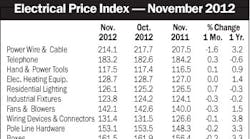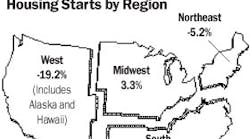Latest from Mag
AIA Billings Index still soft in December. On the heels of a more than three-point drop in November, the Architecture Billings Index (ABI) published by the American Institute of Architects (AIA), Washington, D.C., had a negligible increase of less than one point in December. The AIA reported the December ABI rating was 43.4, up slightly from 42.8 in November. This score indicates a continued decline in demand for design services (any score above 50 indicates an increase in billings). The new projects inquiry score was 55.3, down more than three points.
“The main impediment to an economic turnaround for the design and construction industry remains frozen credit markets,” said AIA Chief Economist Kermit Baker. “We continue to hear that there are numerous viable projects out there awaiting financing. The longer this situation persists, the more dire the news for the architecture profession, which is struggling at unprecedented proportions.”
PMI surges in December. Manufacturing growth accelerated in December as the Purchasing Managers Index (PMI) published by the Institute for Supply Management, Tempe, Ariz., registered 55.9 percent, an increase of 2.3 percentage points when compared to November’s reading of 53.6 percent. A reading above 50 percent indicates that the manufacturing economy is generally expanding; below 50 percent indicates that it is generally contracting. Said Norbert Ore, chair of the Institute for Supply Management Manufacturing Business Survey Committee, “The sector may be benefiting from an excessive destocking cycle as indicated by the recent performance of the Customers’ Inventories Index. Customers’ inventories have been too low for nine consecutive months.”
Leading indicators still looking up. The Conference Board’s Leading Economic Index increased 1.1 percent in December, following a one-percent gain in November and a 0.3 percent rise in October. Said Ken Goldstein, an economist at the Conference Board, “The indicators point to an economy in early recovery. The leading economic index suggests that the pace of improvement could pick up this spring.”

